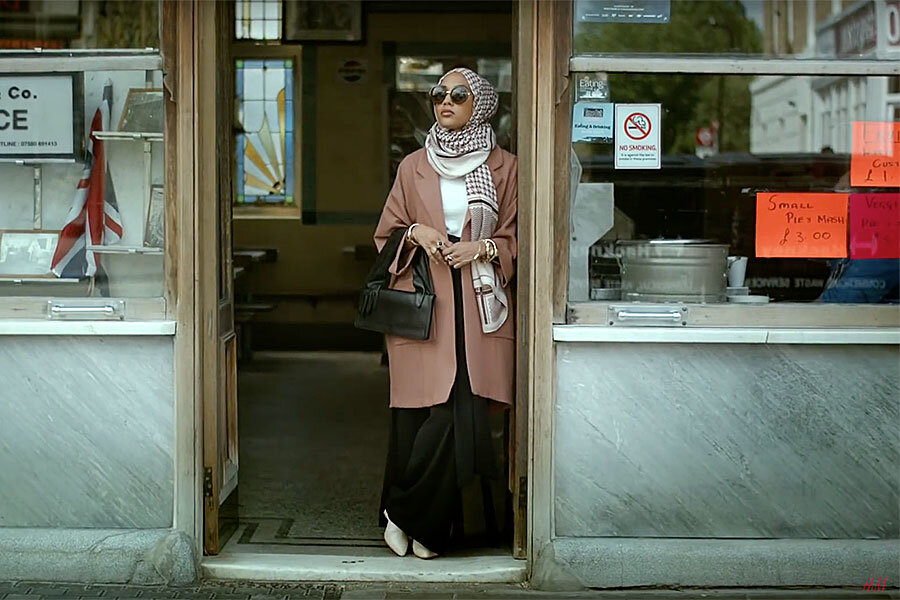Is the hijab part of the fashion world? H&M thinks so.
Loading...
A new fashion advertisement has people talking, not about the video's message to recycle old clothes, but about clothing retailer H&M's first-ever use of a Muslim model wearing a headscarf.
The advertisement features a series of models pointedly clad in traditional fashion faux pas – a man wearing socks and sandals makes a brief appearance. This may not indicate that the hijab is a typical clothing accessory, but the appearance of a Muslim modeling clothes by the world's second-largest retailer does raise awareness, according to The Economist.
"It's just promoting the hijab, in a way," the model, Mariah Idrissi, told CNN. "If anything, it's good."
Some have questioned whether a hijab belongs in a fashion advertisement, or whether a Muslim woman belongs in the fashion world. The CEO of Haute Hijab – a fashion website featuring Muslim women who are fully covered but dressed to the nines – wrote a celebratory article about the H&M ad, claiming the hijab is the symbol of a growing "modesty movement."
"You may have caught glimpses of it – long sleeve evening gowns à la Valentino, Oscar de la Renta caftans, maxi and midi skirts hanging on racks at the mall – it's the modesty movement and it's currently picking up speed," Melanie Elturk wrote for Elle magazine.
Ms. Idrissi, a Londoner with a Pakistani and Moroccan parents, only models as hobby, but she said she saw nothing wrong with modest modeling.
"I've seen a few comments where (people are) against it, but there's nothing that says there is anything against it," Idrissi told CNN. "In our religion, anything that's not stated as forbidden is permissible."
She was pleased that H&M understood that hijab is a full fashion package – arms and legs covered, with no tight clothing.
"Hijab isn't a fashion," she told CNN. "We can adjust it to fashion, but we have to remember that the sole purpose of the hijab is to be modest."
H&M refused to comment on the hijab specifically, telling CNN that the purpose of the advertisement was not to condone any fashion choice except that of recycling after use.
Her appearance in the video "Close the Loop" is accompanied by the words, "Be chic." An Arab man in traditional Bedouin dress with a voiceover, "Be sheikh" follows immediately afterward. The advertisement's final instruction is, "There are no rules in fashion but one: Recycle your clothes."
This is their first appearance with H&M, but Muslim women are not new to the fashion world. Uniqlo announced a new fashion line for Muslim women in Asia last this summer, Fortune magazine reported.
Ms. Elturk of Haute Hijab said other brands will start marketing for Muslims when they realize what a loyal and under-served group they can be.
"Brands are finally taking note of what I've been advocating since I founded the fashion brand Haute Hijab in 2010 – that Muslims (in this case Muslim women) are a thriving, fully-functioning and active segment of society who deserve to be acknowledged and heard," she wrote.






